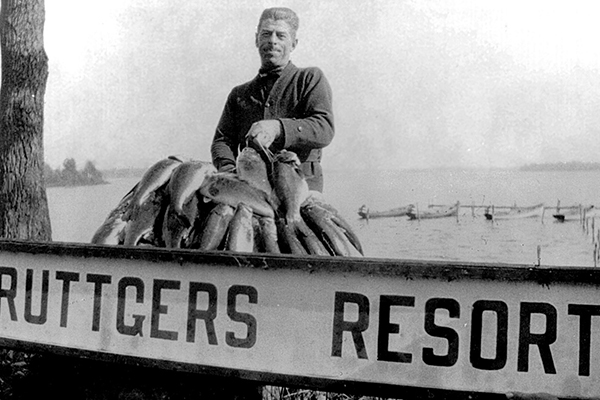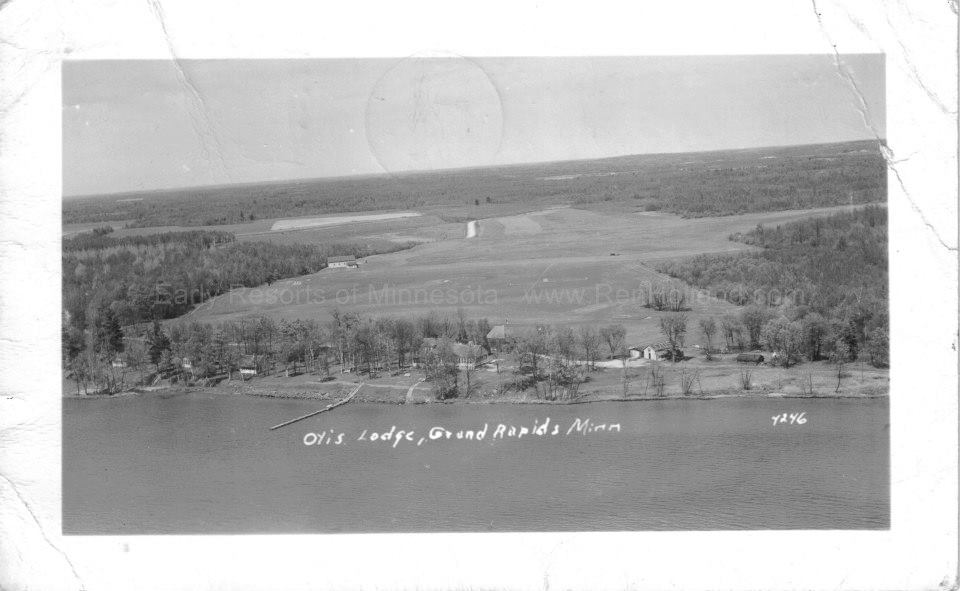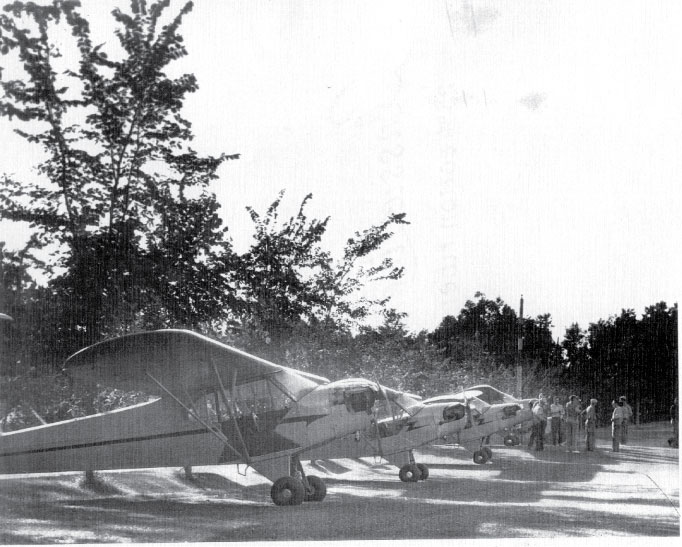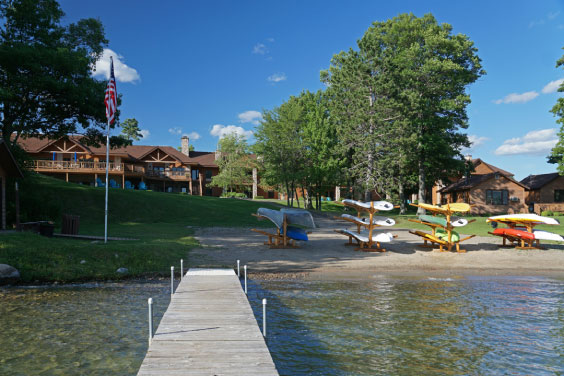About Us
History
A Ruttger Heritage
“The photo collage above showcases four generations of proud lakeside resort owners and operators. From left to right, you have my grandfather Alex Ruttger, uncle Jack Ruttger, and cousin Chris Ruttger, followed by myself (Fred), my wife Gwynne, and our children Steffani, Josh, and Abby. Gwynne and I met at Ruttger’s Bay Lake Lodge 47 years ago. She worked as a waitress and me as a dock boy. When we started building Ruttger’s Sugar Lake Lodge in 1992 with a grand opening in 1994, we brought my family’s longstanding commitment to quality service, food, and hospitality with us. Although we no longer use the Ruttger name, we will always proudly share the Ruttger heritage that we are so proud to be associated with.”
—Fred & Gwynne Bobich, Sugar Lake Lodge Owners

Joseph Ruttger came to America from the town of Neulieningen in Germany’s Rhine Valley in 1883. He traveled to New York and made his way to Minnesota in the spring of 1886. He joined a group of settlers who founded Rankin’s Colony on Bay Lake. The colonists transported a sawmill with them and used it to cut lumber and build their homes and other community buildings. Each colonist filed his own homestead claim; Joe Ruttger settled on an island just off the north shore of Bay Lake.
In 1890, Joe met and married Josephine Wasserzieher. Due to the difficulties of island life, they sold their property and relocated on the north shore of Bay Lake. Their discovery of this “summertime Shangri-La” resulted in the birth of the resort. As word spread of the great fishing on Bay Lake—and of a settler, Joe Ruttger, who had a boat for rent—more and more visitors arrived each year. In the early days, guests stayed in their own tents and some slept in the hayloft of the barn. Eventually, Joe built a special lodging facility and a one-week stay cost of $5.00 for a bed, board, and boat.
When Alex, Joe and Josephine’s first-born son, returned from World War I and a brief stint in Montana, he decided to go into the resort business with the goal of building a first-class property. He borrowed $3,500 from an Aitkin banker to make improvements.


Alex and his wife Myrle devoted their lives to building the resort, and the family tradition was carried on with their son Jack. During Jack’s tenure, the resort grew to its current size with two golf courses, condominiums, and a conference center that has become the mainstay of the business over the past decade. In 1992, Jack’s son Chris took over as the general manager of Ruttger’s Bay Lake Lodge. Chris is one of the first of the four generations to study hotel administration and has been busy making plans to take the business into its second century of operation. Chris graduated from Cornell University in Ithaca, New York in 1984 with a degree in hotel management. He acquired experience from working at the Grand Hotel, Mackinaw Island, MI, and the Normandy Inn, Minneapolis, MN. He returned to Bay Lake in 1985.
Otis Lodge also began with enterprising settlers and pioneers in the resort business—Art and Eleanor Otis. Years ago, Sugar Lake was known by the Chippewa name, Sissebakwet. The Chippewa inhabited a small sugar camp at the north end of the lake dating back to 1867. Among the early settlers on the lake were the Otises. Art Otis and his father used to camp out on the lake during the summers of 1902–10. Art built a house on the south side of Sugar Lake in 1914. In the winter of 1925, with hand-made skids and a team of horses, the house was moved across the lake to the north shore.
Eleanor Otis was born in Hibbing in 1902. She grew up in the area and attended the teacher training department in Central School in Grand Rapids, MN. After a summer session at the Bemidji Normal School majoring in rural education, Eleanor selected the Sugar Lake School for her first teaching assignment. Rural teachers often stayed with families, so she moved in with Art Otis and his mother in 1921. Art and Eleanor were married in 1923 and with the help of her teaching salary, they rented boats, one cottage, the log bunkhouse, and camping equipment. As people discovered the great fishing in Sugar Lake, their business grew, and they continued to build, ending up with 14 cottages offering the American plan. In 1930, they cut down some trees and established a golf course. By September 1940, they had added an airfield, and 47 planes flew in for an impromptu dedication. In 1944, the Saturday Evening Post cited Otis Lodge as the first resort with its own airport in the nation. Once a year, they had a fly-in breakfast, where their friends would fly in from all over the country. As a young woman, Eleanor lamented her limited cooking knowledge, but with steadfast determination, she learned and created meals that were “beyond criticism”. In 1964, the Otises retired and sold the resort.


As pioneers in the resort business, Joe Ruttger and Art Otis established a reputation of quality early on and were among the first in Minnesota to offer the American plan resort concept, which included lodging, meals, and golf packages. Fred and Gwynne Bobich will continue to build on this legacy with their own business and hospitality.
In 1994, the same year that Sugar Lake Lodge was founded, Otis’s Restaurant opened in the Main Lodge to serve Italian and American cuisine while also featuring some of Eleanor Otis’s famous recipes and wine from the Ruttger family winery in Neulieningen, Germany. The $2.4 million lodge houses a spacious lobby, a large dining room, and a state-of-the-art conference center for leadership retreats and private events. In addition to the 18,000 square-foot lodge facility, six lakeside cottages and 42 three-bedroom golf course townhomes were completely remodeled. Four three-bedroom suites, attached to the lodge, were added in July 1996. An additional four suites, making 24 rooms total in the Main Lodge, opened in June 2004.
